Do Bird Houses Need A Perch? Reveal the Surprising Answer
Birdhouses are a popular addition to many gardens, offering a safe and cozy space for our feathered friends to nest. But do bird houses need a perch? Have you ever wondered thinking over it? The answer may surprise you.
Well, in this post, we will explore the pros and cons of having a perch on your birdhouse and whether or not it is necessary for attracting birds.
We’ll also provide tips on how to choose the right birdhouse for your garden and create an inviting environment for our avian neighbors.
So, bird enthusiasts, get ready to learn all about the fascinating world of birdhouses and whether or not they need a perch.
Understanding the Purpose of a Perch in Birdhouses
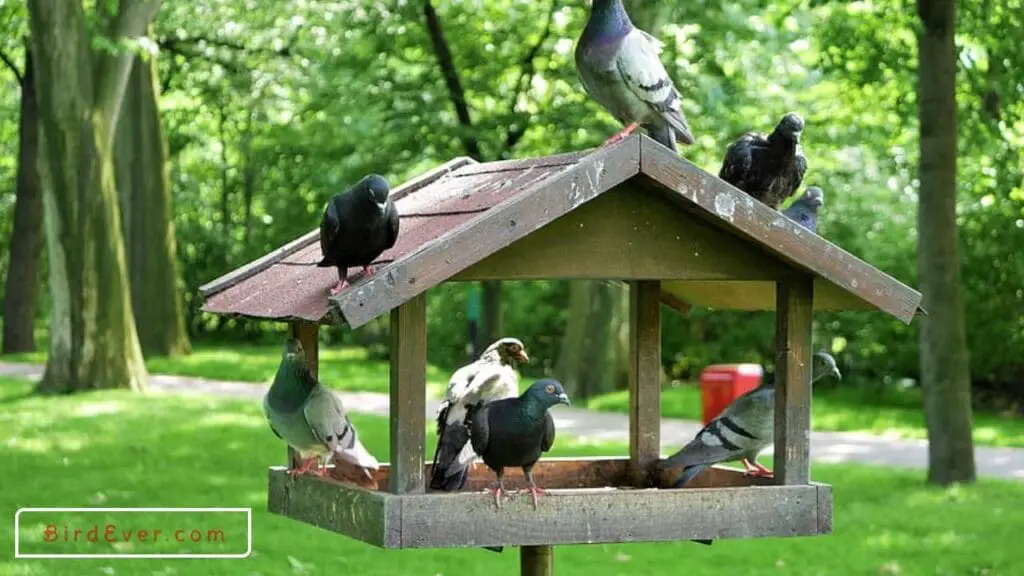
The purpose of a perch in birdhouses is to provide a convenient landing spot for birds as they approach and enter the birdhouse.
Perches can be helpful for birds that prefer to land and pause before entering the birdhouse, such as certain species of sparrows or chickadees.
Moreover, perches can also be helpful for birds that use the birdhouse as a refuge from predators or harsh weather conditions. Birds may use the perch to survey their surroundings, groom themselves, or take a break from flying.
For birdwatchers, having a perch on a birdhouse can make it easier to observe and identify different species of birds. The perch provides a clear vantage point where you can watch as birds land, enter or exit the birdhouse, or engage in other behaviors.
Some bird species, such as bluebirds or wrens, prefer to have perches near their nesting sites. By providing a perch on your birdhouse, you may increase the likelihood of attracting these types of birds to your yard.
If you have children or are interested in learning more about birds, having a perch in your birdhouse can provide educational opportunities. You can observe and study the behavior of different bird species up close, which can be both fascinating and educational.
Why Bird Owners Use A Perch on A Birdhouse?
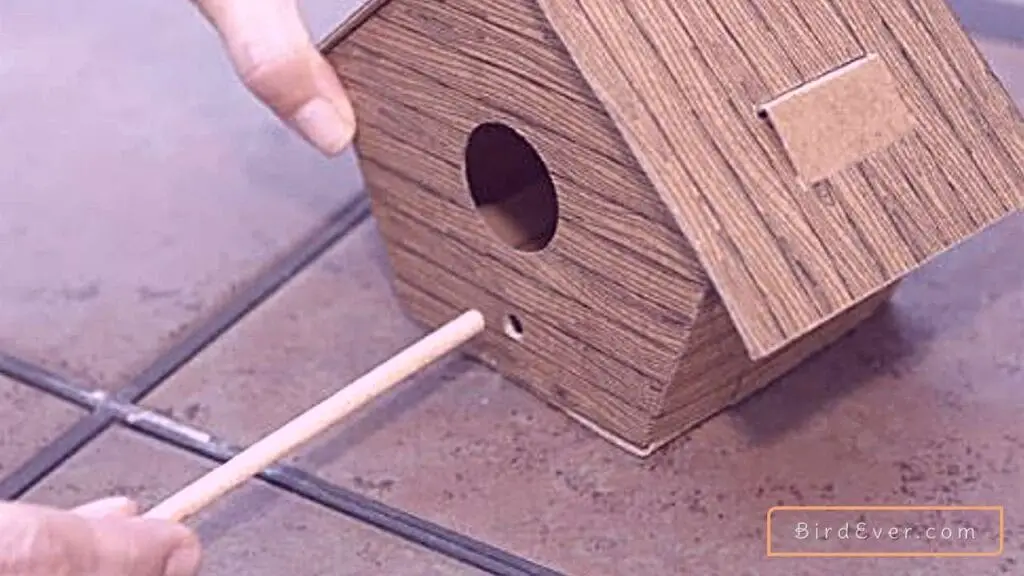
Bird owners use a perch on a birdhouse for a variety of reasons. One reason is that it provides a convenient place for birds to rest and observe their surroundings.
The perch allows the birds to take a break from flying and gives them a vantage point from which they can keep an eye out for predators or other birds.
Furthermore, the perch can serve as a landing spot for birds as they approach the birdhouse, making it easier for them to enter and exit.
Overall, the perch on a birdhouse enhances the functionality and comfort of the birdhouse for its avian residents.
Controversy Surrounding Birdhouse Perches
There is a controversy that perches can provide an easier access point for unwanted birds and may attract non-native or aggressive species.
Not all bird species require or prefer perches. Some bird species, such as woodpeckers or nuthatches, do not use perches at all. These birds have adapted to cling onto tree trunks or vertical surfaces without the need for a perch.
In fact, some bird experts recommend removing perches from birdhouses because they can make it easier for predators to access the birdhouse.
However, a perch-less birdhouse can discourage unwanted occupants and protect eggs or nestlings. It’s crucial to weigh the benefits and drawbacks to ensure the safety and well-being of the birds.
Ultimately, whether or not to include a perch in a birdhouse depends on the specific needs and behaviors of the bird species you are trying to attract.
Must-Have Features in A Perch for Birdhouse
When it comes to providing a safe and comfortable perch for a birdhouse, there are a few must-have features to consider:
1. Perch Length & Height
The height and length of the perch should be appropriate for the size of the birdhouse and the species you are trying to attract. A general rule of thumb is to place it at a height that is comfortable for birds to land on and take off from.
2. Stability
The perch should be appropriately sized for the bird species you are trying to attract. It should be wide enough and stable enough to support the weight of the birds without wobbling or tipping over.
After all, the primary function of a perch is to provide a secure landing spot for our feathered friends.
3. Entrance Hole
The placement of the perch on the birdhouse is crucial. It should be positioned in a way that allows easy access for birds, without obstructing their entry or exit from the birdhouse.
Placing a perch mounted to the front of the birdhouse near the correctly sized, reinforced entry hole, at a comfortable height, will enable birds to land and take a moment before entering.
Measuring the entrance hole size is an important factor when looking for a birdhouse. The entrance hole size ultimately determines what birds will find the house favorable to occupy and can deter many predators from using your birdhouse.
Additionally, it is important to ensure that the roof of the birdhouse provides sufficient overhang beyond the entrance hole to protect the birds from the elements and minimize the amount of moisture that can enter the birdhouse.
The roof should have a minimum of ½ inch overhang at the back.
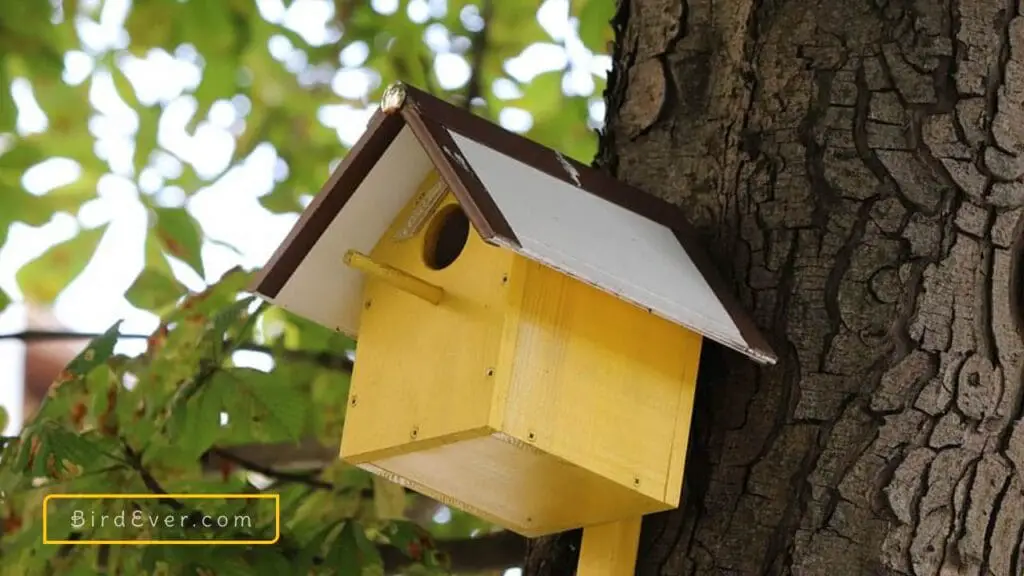
4. Comfort
A comfortable perch is essential for birds to rest and feel secure. Consider adding natural textures or materials, such as rough bark or small branches, to the perch.
This will mimic the natural environment of the birds and provide a familiar and comforting surface for them to grip.
5. Predation Prevention
While perches can attract some bird species, they may also attract predators. It’s important to design the perch in a way that minimizes the risk of predation.
For example, you can position the perch away from nearby trees or structures where predators might have easy access to the birds.
6. Nesting Materials
In addition to providing a landing spot, a perch can also serve as a place for birds to gather nesting materials.
By attaching small hooks or loops to the perch, you can make it easier for birds to collect twigs, leaves, and other materials they need to build their nests.
This not only adds functionality to the perch but also enhances the overall birdhouse experience for your feathered friends.
7. Texture
Birds prefer perches with rough surfaces, as they provide better grip and stability. Consider adding small grooves or ridges to the perch to enhance traction.
Besides, the texture of the perch can also add visual interest to the birdhouse. You can choose from a variety of materials.
For example, natural wood, stone, or even decorative elements like mosaic tiles, create a perch that complements the overall design of the birdhouse.
By incorporating these must-have features into your birdhouse design, you can create an inviting, risk-free, and functional space for birds to rest and observe their surroundings.
Alternatives to Birdhouse Perches
When it comes to providing perches for your birdhouse, there are several alternatives you can consider. One option is to use natural perches.
Such as branches or logs, which not only provide a natural and authentic look but also blend seamlessly with the environment.
Alternatively, you can opt for artificial perches made of durable materials like plastic or metal, ensuring longevity.
Another possibility is to include multiple perches in your birdhouse to accommodate multiple birds at once. Adjustable perches are also available, allowing you to cater to different bird sizes.
Lastly, some bird species prefer to enter and exit their nests without perches, so you can choose to leave them out altogether.
Also read: Bird Perch with Suction Cup
Do Bird Houses Need A Perch? FAQs
Do you want to know more info regarding birdhouse perches? Therefore, read the below FAQs too.
How to make my birdhouses safe from threats while using a perch?
Use a screw or bolt to attach the perch to the wall or post. Add a cap to the top of the perch to make it difficult for animals to climb up.
Install a bird feeder or cage in a safe location. Choose a location that is away from bushes and trees, and out of reach of cats or other animals.
Moreover, place birdhouses in an open area. Place them close to the ground but not near any windows or doors.
How long should a perch be on a birdhouse?
The ideal perch height for a birdhouse depends on the type of bird that will be using the birdhouse. For example, a perch that is too low for a sparrow will not be high enough for a dove.
You should also consider the size and weight of the bird. Generally, you should choose a perch height that is about one-third of the bird’s body length.
How do I know if my birdhouse has good perches?
If birds are successfully using the perches without any issues, it’s a good sign that they are suitable.
Is it better to have an open or closed birdhouse perch?
It depends on the type of bird you are trying to attract.
Open birdhouses provide more ventilation, which is beneficial for birds that have respiratory problems, such as woodpeckers and chickadees.
Whereas, closed birdhouses trap heat inside the structure, which can be harmful to some birds, such as the red-shouldered hawk.
Does the type of bird influence the need for a perch?
Different birds have different needs when it comes to perches. While birds that spend most of their time flying may not require a perch, climbing or hopping birds like parrots or finches benefit from having one.
On the other hand, some birds, like owls and hawks, sleep or perch in one spot for hours at a time. Thus, the type of bird and the specific needs that it has may influence your decision about whether to include a perch in your birdhouse design.
Why do bluebird houses not have a perch?
Bluebird houses are designed without perches for a specific reason. Bluebirds are cavity nesters, meaning they prefer to build their nests inside enclosed spaces such as tree cavities or specially designed birdhouses.
By not including a perch on the bluebird house, it helps deter other birds and predators from accessing the nest. Birds that are more likely to use perches.
For instance, sparrows and starlings. They can be aggressive towards bluebirds and may attempt to take over the nesting site.
Final Note
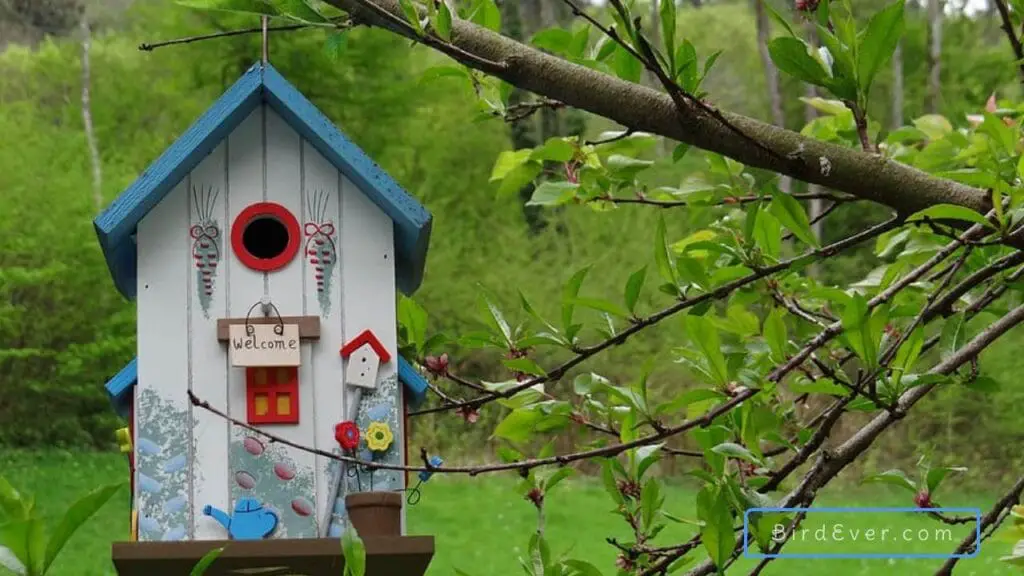
To perch or not to perch, that is the question when it comes to birdhouses. While perches may seem like a decorative addition, they actually serve a purpose.
Alternatives to perches, such as sloped roofs or predator guards, can also be considered to frighten away any intruders in the area.
Such as pets, other birds, and ground predators, like squirrels, raccoons, snakes, and cats, are sometimes to blame for driving away residents.
Many of these animals benefit from shorter perches, while a too-long perch in a birdhouse can attract them and other, larger animals, including birds of prey and rodents.
Ultimately, the decision is yours to include or not include a perch in your birdhouse. Different species have different preferences and behaviors.
If you decide to include a perch, make sure to take precautions to protect the small birds, such as chickadees and wrens, from predators, such as cats, larger nuisance birds, or wildlife using it as a stepping stone to access the birdhouse interior.
Providing birdhouses with as many favorable attributes as possible can give the birds a better chance and make it easier for the caretaker.
That size is big enough for chickadees and wrens, but too small for house sparrows—an invasive, non-native species that can be detrimental to bluebirds, chickadees, and other species.
Placing your birdhouse in the Fall or Winter is the best time to put up a new birdhouse so that birds will have plenty of time to locate them before the breeding season.
Some of the most common backyard birds that use houses are chickadees, titmice, bluebirds, and wrens.
Remember, creating a safe and welcoming environment for our feathered friends should always be your top priority. Have fun with your avian friends.
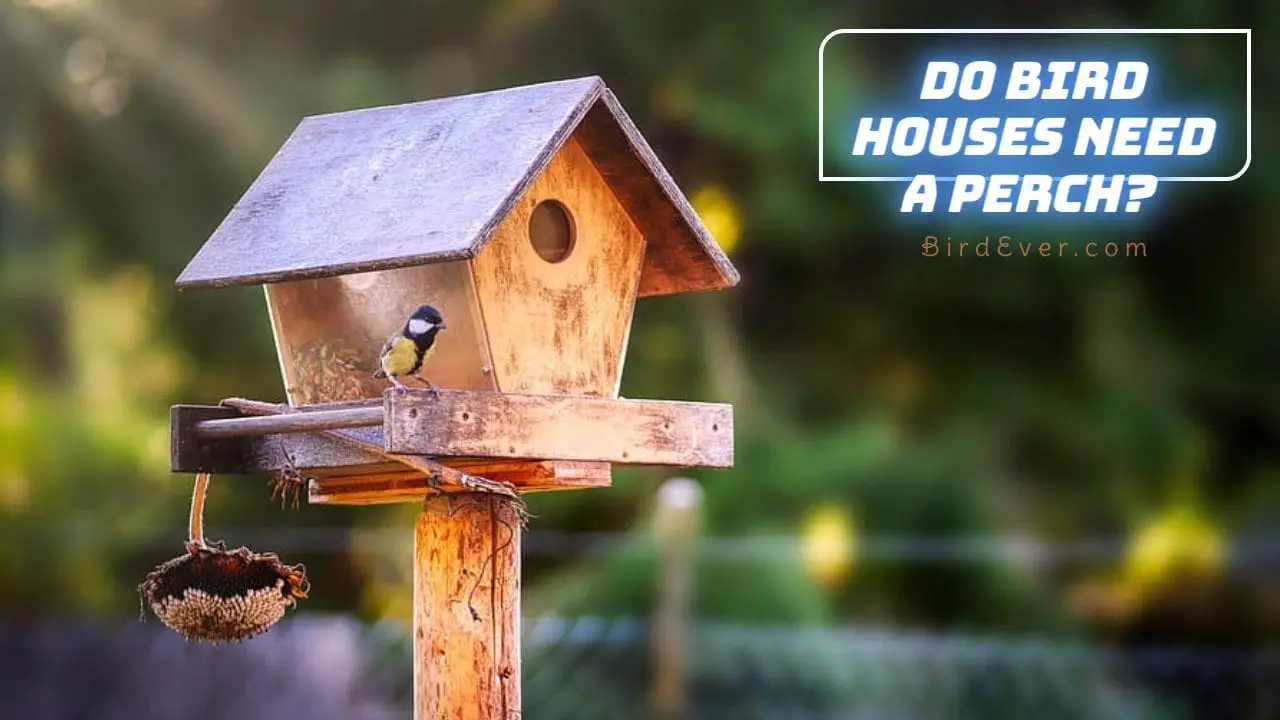
Thanks for the heads up that investing in birdhouses makes it easier to attract birds around your space, I have a friend who wants to try creating a natural oasis around his backyard. I should talk to him about finding a company that sells all sorts of decor in the future.